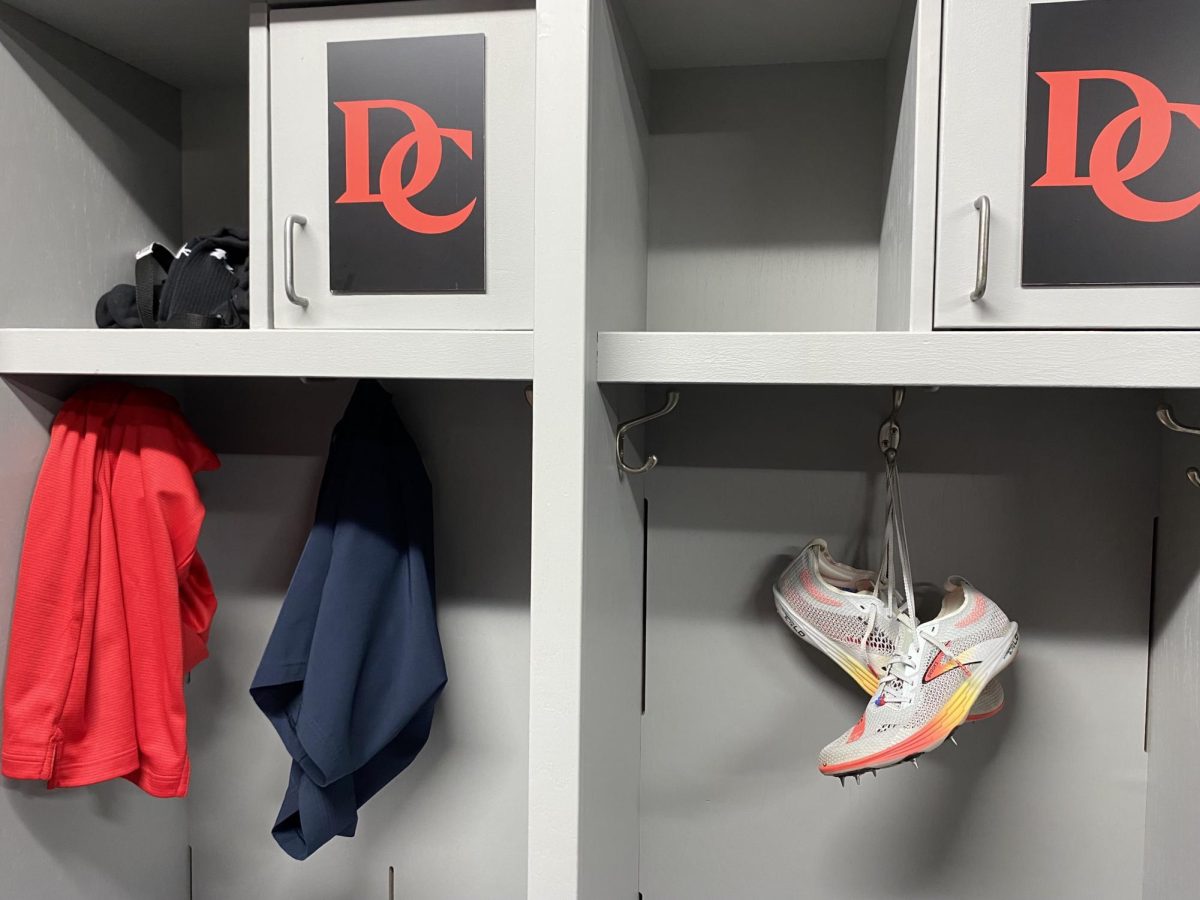
Aidan Marks
Some students walk away from sports due to injury or stress.
For many Davidson students, college athletics is more than just a commitment to practice and competition. It’s part of their identity, their community, and the daily rhythm that structures life on campus. But for some athletes, the time eventually comes to step away. When talking with current and former student-athletes, one thing became clear: leaving a team is rarely about being “too busy” to balance it all.
Ezra Minard ‘28, a former track and cross country runner, described his decision to leave after repeated injuries. “I loved the team I was on, the people, the coaching staff, but I experienced a lot of injuries, several consecutive ones, that took me away from competition.” Even when he cut back his training, the problems didn’t go away. “I’ve always been fragile. I had injuries in high school […] I was conservative in my approach to training, and I still got hurt.”
Still, Minard credited Davidson’s sports medicine staff for doing everything they could. “The trainers were amazing. […] I was happy with the care that I received. Some problems aren’t quickly fixed, even with the right help.”
Leaving was bittersweet, but his teammates and coaches understood. “People were quite sad, but they were understanding. Athletes, particularly runners, know about injury. My situation is not uncommon.”
Akeelah Romeo ‘28 a former cheerleader story unfolded differently. She hadn’t been recruited prior to coming to Davidson; she walked on to the cheer team after orientation, encouraged by a fellow student. “I got here, and someone was like, hey, come to a clinic, come try out. I went, and then I ended up on the team.”
The academic side also weighed on her. “Sometimes I didn’t have enough time to do my work, even though freshman year I didn’t have a huge workload.” Romeo described the trade-offs of balancing cheer with school: “Our coach always preached academics first, but it felt more like choosing homework over cheer was optional. If you had a game you’d sacrifice homework or sleep. It wasn’t always a choice.”
Looking back, Romeo said she doesn’t regret the experience. “If you’re interested, go for it,” she said. “But if it’s not working, you don’t have to stay. They can’t force you to be on the team. I loved my time on the team, it was good that I tried it, because now I know it just wasn’t for me.”
Not every athlete chooses to leave. Harry Carter ‘28 , a current track and cross country runner, acknowledged the same pressures, injuries, academic stress, and the thought of “what if I quit?” but his conclusion is different. “When I get overwhelmed, I like to remind myself that I do the sport because I love it and I wouldn’t want to trade it for a life without it.”
Harry knows injury and burnout are the most common reasons athletes step away. “A large portion of people leave because of injury issues and they decide to move on,” he said. “Other people decide to leave because they’re burnt out from the sport or decide they’d rather spend that time doing other things they’ve grown to enjoy.”
Director of Athletics Chris Clunie ‘06 believes in the system the department has created to support scholar-athletes throughout their time at Davidson.
Clunie highlighted the athletic training center and its network of partnerships. “We have a full-blown athletic training center that works every day with our scholar athletes. Everything from injury prevention to injury rehabilitation,” Clunie said.
“We partner with Atrium Health, with OrthoCarolina, we have access to their resources for x-rays and MRIs. We also have Madison [Sea], who works under our sports performance umbrella with a focus on mental wellness. It’s a multifaceted approach.”
Clunie also said that coaches are expected to support students beyond just physical performance. “We call ourselves scholar-athletes and the scholar comes first,” he said. “The student piece comes first, and then obviously the second piece is that we want to win. But the holistic scholar-athlete experience is number one. Everybody here is an educator.”
Asked about burnout, he acknowledged that Davidson’s model makes the balance more difficult. “It is hard, because we are a top-level liberal arts school competing in Division I athletics. That is unique,” he said. “Scholar-athletes do something that general students on campus just don’t do the hours they put into the sport combined with obligations in school.”
Still, he pointed to policies and programs designed to support balance, including limits on missed classes and mentorship opportunities. “We have a missed class policy, we have a Cats Care mentorship program that pairs freshmen with upperclassmen from a different team,”
For him, the key is reminding students that athletics is something they do, not who they are. “You’re more than just a soccer player, more than just a field hockey player,” he said. “You never want to define yourself just by your sport.”
Tension between injuries, academic demands, and the pull of community runs through athletes’ stories. Those who left their teams often did so because of factors beyond their control, injuries that wouldn’t heal, or life events that shifted their priorities. Those who stay point to the friendships, structure, and joy of competition as reasons to keep lacing up their shoes or showing up for practice.
As Minard put it, “Doing competitive sports teaches you from a young age to understand your own limitations. And I think that’s a wonderful thing to learn.”
For Carter, the calculation is different but no less clear. “I love the sport and the people who share it with me make the grind worth it.”